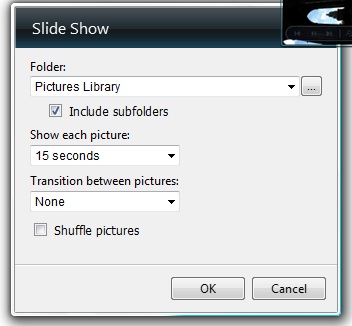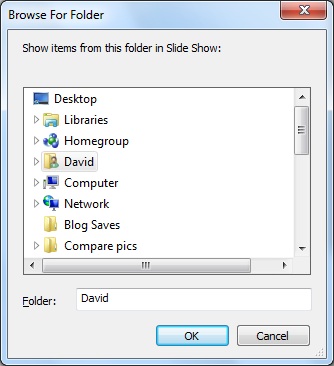Visualisation is a topic shrouded in superstition and misunderstanding. So I've put this article together to explain why I use visualisation, and also how I use it on a practical level.
It’s A Kind Of Magic?
Before i get started, i'd just like to point out that I don’t believe visualisation is "magical", although I do believe it has brought about seemingly magical changes in my own life (when used in conjunction with other powerful principles). I don't subscribe to the belief that visualisation is a means to alter the universe, that it aligns the cosmos with desires and attracts materialistic quintessence; vis-à-vis wealth, health, sports cars and unicorns. Although I've heard a few ramblings to the effect of “sit on your couch and attract good things into your life via visualisation”.
What's Really Real?
In essence, visualisation is a means to impress desires onto the unconscious mind – as well as some other good stuff that I'm going to discuss. Visualisation is effective because the mind sees and thinks in images. If I were to ask you to close your eyes and think of an apple, it's likely that you'd see a picture of an apple as opposed to the word A P P L E spelt out. Also, from the way I've come to understand the workings of the mind, the unconscious cannot tell the difference between a “real” experience and one that is vividly imagined – it reacts the same to both. Understanding this is important for the rest of the article, and you can have a little test of this yourself If you want.
Acrophobia
(Skip this test if you have a genuine phobia of heights / falling).
As mentioned above, the unconscious cannot tell the difference between a “real” experience and one that is vividly imagined. So if you want to give this a test, get yourself into a relaxed state and away from any noise / distractions.
I want you to imagine yourself on top of a skyscraper. In order to make this feel like a real experience, you will need to imagine the following.
- The weather – do you imagine it to be sunny / wet / cold / windy outside?
- Sounds – are other people talking, if it’s windy – is it loud?
- Smells – are there any distinct smells nearby?
- Feel – how do you feel on top of the skyscraper? Nervous, excited, in awe of the view?
Once you've set the scene, start walking around on top of the skyscraper. Imagine that you decide to take a look over the edge. Over the precipice you can see people below, but they appear to be the size of ants. You put your hands onto the railings and then step on the first rung to get a better view.
Suddenly the railings jolt slightly, you lose balance and slip forwards. As you fall, you grasp frantically for anything you can get hold of – smashing your arm in the process.
You just manage to grab onto a ledge while your body dangles hundreds of metres above the ground.
You hear – shouting / screaming and panic?
You can feel your fingers slowly start to lose their grip.
What's going through your mind?
I’m not so great with heights. So when I vividly imagine this scenario my palms begin to perspire, my heart rate increases and I feel more alert. You can make up your own scenario if heights don’t bother you – so long as you make it vivid and believable.
Since the unconscious mind controls autonomic bodily functions; when vividly imagining something – with relevant emotional reactions, the unconscious triggers the same responses as if it were real. Sometimes I've found that it's best to visualise familiar surroundings first and then combine it with a desired goal (such as an ideal physique goal). So for instance
- Walk up to your front door, what side is the handle on?
- Reach out and open the door.
- Walk outside.
- It’s a beautiful summers day, its hot with a perfect cooling breeze.
- Find a place in which you can lie down and enjoy the sun .
- When you get there, begin removing your top.
- As you remove your top, you reveal a lean / defined / muscular / slim / toned / trim physique.
- At this point you can visualise and create your ideal physique.
- Picture it. Visualise each part of your physique while you remove your top, so starting with the stomach area. Imagine a tight defined set of six pack abs, a flat toned stomach or whatever your goal is.
Whenever I use a visualisation exercise, I make sure to feed the unconscious with plenty of sensory information, including
Vivid images, sounds, smells, taste, touch and the appropriate emotions.
What Has Visualisation Got To Do With Goal Achievement?
The RAS
Firstly, visualisation is an effective means to impress desires onto the unconscious mind. This is beneficial because of an area of the brain known as the RAS (reticular activating system).
The RAS has a number of functions, however, one remarkable function is its ability to act as a filter between the conscious and unconscious mind. We all take in millions of bits of information through our various senses every second. Most of this information is filtered out as an unimportant; however, when we think about something – especially with emotion, the object of our focus becomes deemed as important. As such, the RAS will bring anything considered to be important / relevant to our focus to the conscious minds attention.
You may have noticed this a number of times. For instance, you've been thinking about a certain something a lot. Perhaps you've been looking into buying a new car, buying a book, or you've just started watching a new TV series. Suddenly, you start to see and hear things regarding that certain something all over the place. You see it advertised, you overhear people talking about it and it almost seems like fate. Followers of the “law of attraction” describe this phenomenon as attracting. It is however, more accurate to say that we're simply noticing something that otherwise would’ve been filtered out of our awareness. I guess the “law of perception” would be more accurate terminology, since we're consciously perceiving something that was already there – as opposed to attracting it per se.
This is why focus is so important. Whenever I focus on a desire, I always ensure that I'm focusing on EXACTLY what I want to achieve, as opposed to what I want to avoid or get rid of. Visualising or affirming what you don't want is like aiming for the space around a target, but because you're focusing on the space around the target – you're more likely to hit the space. Why wouldn't you just focus and “aim for the target”?
Comfort Zones
Secondly, one responsibility of the unconscious mind is to keep us alive and safe. So I've found that when something pushes me too far out of my comfort zone (even when it's something I consciously desire), it's usually met with resistance or rejection. When striving to achieve something that's unlike anything I've ever experienced before, I'm essentially venturing into the unknown. On a conscious level, it's irrational to assume that the unknown will harm or kill me; however, my unconscious operates on a “better safe than sorry policy” – since the unknown brings with it the potential for harm. Of course, the fear of criticism plays a role here as well as limiting beliefs, which I'm going to cover in this article – I'm just trying not to digress too much at this point!
In any case, whether it was a genetically predisposed caution towards the unknown, fear of criticism, negatively held beliefs or a combination that caused me to self sabotage becomes moot – since visualisation helped alleviate all of these “challenges” simultaneously.
By creating artificial experiences in the mind and having the unconscious believe them to be real. It’s possible to make the unknown seem more familiar and safe to proceed with, which in turn expands the area of my comfort zone to encompass my desires (or at least makes it so that my desires are not so far out of my comfort zone that I continually self sabotage).
I like to compare this to the first time I tried to get a job. Fresh out of college, I went looking for work to make ends meet. However, nobody would employ me because I lacked experience. The paradox being that I couldn't gain experience until I was given the opportunity to work. This was a lot like striving to achieve my first big goal, and my unconscious was a lot like a prospective employer, neither wanted to take a “risk”. When I was striving to achieve my first big goal, my unconscious had nothing in its records about me experiencing anything similar. Likewise, I had nothing on my CV regarding previous work experience. I could’ve lied and added false experience to my CV. Which comparably is what I’ve used visualisation for – to make up experiences in the mind, so that my unconscious would give me the opportunity to make them a reality.
The Self-Concept
Thirdly, I've come to understand that we all hold beliefs about ourselves in different areas of our life. Ranging from beliefs about our performances, abilities, appearance, knowledge, intelligence and so forth. These beliefs make up what is referred to as the self-concept. Essentially, the self-concept is a broad term referring to how an individual perceives themselves to be as a person, normally in contrast to the rest of society.
Anyway! I bring all this self-concept stuff up because when I first started to transform my body, I was trying to create my “ideal self”. However, my then held self-image (which is an offshoot of the self-concept), was incompatible with who I was trying to become.
An overweight dieter may want to become a fitness model, however, if they currently believe and think of themselves as a “fat pear shaped person with bad genetics”, their ideal self and current self are incompatible. Similarly, if an underprivileged person wants to become a millionaire, but thinks of themselves as “poor person and that wealth is synonymous with greed”, they would unconsciously sabotage any action that pushed them too far above / below how they perceived themselves to be as a person. People rarely rise too far above / below their beliefs about themselves, and if they do, they seldom outrun their unconscious programming for long.
Becoming aware of my self-concept was important because habits, behaviours and ultimately actions are primarily controlled by beliefs. After two years of trying to create my ideal physique with my old self-image locked in place, I soon realised the error of not getting the mindset right first!
Self-Concept + Visualisation = ?
To achieve a goal, I need to align my beliefs with a goal. To align my beliefs with a goal, I need to change how I see myself as a person. To change how I see myself as a person, I visualise, believe and think of myself as the person I see myself becoming – CONSISTENTLY – until the day that vision becomes a reality. I found that when I committed to this process fully, without doubt, fear or confrontation, my old beliefs were replaced with beliefs that better fit the type of person I saw myself as becoming. Once those beliefs took hold – my habits, thought-processes and behaviours came along for the ride. Obviously, there's still a bit of legwork! I still have to consciously challenge a few limiting beliefs, create desirable habits and use a bit of self discipline. However, once the right beliefs rooted themselves, I didn't have to put up with the self sabotaging behaviours or use a huge amount of willpower every step of the way.
So if I used my aforementioned overweight dieter example. If they were to visualise, believe and think of themselves as a fitness model consistently – once accepted unconsciously, they would start to develop new beliefs, habits and behaviours. So where they may have previously associated food with pleasure, social indulgence, comfort eating, a way of dealing with stress and as a coping mechanism. They now start forming beliefs such as food is fuel, you are what you eat and seeing their body as a temple etc. When their new self-concept solidifies, restraint in social eating situations, food moderation and making consistent healthier choices rarely require willpower; they become unconsciously driven actions.
Isn't Visualisation Really Just Daydreaming?
Although this article may have made the topic of visualisation sound somewhat complicated In areas; I've found that when it comes to practical application, visualisation is very much like daydreaming. The key differences however, are that visualisation requires a greater level of sensory detail, emotional impact, consistency and belief to make the experience seem “real”. In order to make visualisation work effectively, it's essential to gain control of your thoughts and feelings.
If you try to visualise yourself having achieved your goal while thinking “it would be nice, but it will never happen for me”, “visualisation is a load of BS” or “this isn't going to work” etc, then how do you think the unconscious will respond to your “artificial experience”?
Referring to an analogy I made about applying for my first job. If I were to make up experiences and put them on my CV, then when questioned in a job interview, I respond with “this never happened to me”, “my experiences are a load of BS” or “I don't think you're going to believe this lie” etc, can you imagine me getting the job?
To me, visualisation is more about how you think and feel during the process, as opposed to the actual exercise itself. When I visualise my goal, I'm trying to attach a strong and positive feeling to the achievement of my desired experience. Which in turn brings the desired experience within the realm of my comfort zone, changes how I see myself as a person, impresses my desires unconsciously, keeps me highly motivated and ultimately – moves me towards where i want to be.
For me, visualisation has been a means of reprogramming my unconscious, changing beliefs, alleviating fears, increasing motivation and impressing a powerful and definite direction… It's been a tool to experience a desired outcome, to believe in my vision, and to practice it over and over again until I make that outcome a reality.
My Personal Experience With Visualisation
Visualisation is a skill that can be developed like any other. I found visualising my goals to be a little awkward at first, however, I trusted in the author that introduced me to the concept (Tom Venuto @ burnthefat), so I stuck with it. Initially, I struggled to imagine myself as the person I desired to be. I also struggled to picture scenarios in which I'd achieved my goals, along with the associated feelings I wanted to experience. It took time, patience, practice, practice and more practice. Many times in the beginning, I felt like it was a pointless exercise, but the more I read about the topic – the more I stuck with it. Ultimately, I'm glad I did!
Practical Visualisation
I prefer to visualise my goals first thing in the morning while I'm completely relaxed and can devote my full level of concentration. I've tried using visualisation at different times of the day, however, I usually end up getting distracted too easily.
I find it helpful to visualise familiar surroundings first, then modify key details after.
So for a body transformation example, I visualise myself walking to my front door – I move the door handle and then look around the surrounding area. When I walk outside, I imagine the weather conditions, familiar smells, sounds, sights etc. I then visualise myself removing my top and seeing my reflection in my car window (thus making it more convincing for the unconscious – since I can see body through a first person perspective). I then visualise each individual body part in the reflection of my car window and imagine them looking exactly how I want them to. This isn't the definitive way to use visualisation, this is merely one approach I've adopted. However, I find that looking from a first person perspective in a familiar setting makes things seem more real.
If your goal is to develop your ideal physique for an upcoming holiday; you could apply a similar technique and recall a previous holiday memory in detail, but change your physique to look the way you desire – while you walk along familiar scenery.
I find it beneficial to write my visualisations down in an abbreviated format. My mind tends to chunk images and words together, and certain descriptive words trigger a small “mind-movie” – I guess you could call it. So words like “Sunny beach” triggers imagery of me walking down a beach while on holiday, it’s very warm but with a calm breeze. I can hear gentle waves washing up in the background and I can feel warm soft sand beneath my feet. This can help build up a visualised scenario quickly by putting together a few “trigger words”, it saves having to read an entire paragraph each time and losing “the moment”. For example, a more in-depth visualisation such as
I walk up to my front door and reach out to open the handle. It's a warm summer's day, so I decide to wash my car. As I step outside the heat on my skin feels great and there's a light breeze to keep me cool. The heat gets a bit too much for me, however, so I decide to remove my top. I catch a reflection of my body in the car window, I can see how my training has paid off! I see large rounded biceps with flawlessly balanced horseshoe shaped triceps. As I look up a little I can see proportioned shoulders that tie in perfectly with my chest and arms – I'm so lean that I can see clear striations on my shoulders. As I turn round to face the car window, I see a sculpted round chest and underneath – a tight, razor-sharp and defined set of six pack abs. Even in a relaxed state I look super lean and vascular, with a few veins popping out around my pelvic area, shoulders, and along my biceps.
Becomes
- Warm summers day
- Carwash
- Remove top
- Car window reflection
- Large rounded biceps, horseshoe triceps
- Proportioned shoulders
- Striations
- Sculpted chest
- Six-pack abs
- Super lean
I've learnt that to take control of life, you must take control of your thoughts first. Since many of my goals have been completely incongruent with my self-concept, I've faced a ridiculous amount of resistance – from both myself and others, along with seemingly never-ending doubt and negative thinking. When I first tried to visualise myself achieving my goals, I'd have thoughts pop up like “who do you think you are trying to achieve this, you can’t do it”, “what makes you think this time will be any different to all the times you've failed”, “stop fooling yourself” and so forth. Learning how to counteract these negative tendencies was invaluable. Most of my negative thoughts were not facts, they were opinions based on my then held beliefs. Over time, I learnt how to counter these negative thoughts by affirming the exact opposite – or objectively disputing the validity of each thought. This was vital because I knew that every negative thought I let through was going undermine the positive instructions I was trying to plant. I knew this on a conscious level, so it took a lot of willpower at first to reframe my thoughts and make things work. However, I now rarely (if ever) have to deal with this kind of resistance towards my goals. I've realised that thoughts only have as much influence over you as you allow, and understanding that most thoughts ARE NOT FACTS, is crucial to dealing with negative thinking.
One final thing I've found to be valuable is to create a “vision board”. A vision board is basically a collection of motivating images / quotes etc. It helps me to look at powerfully motivating images before I start to visualise my goals, this helps to keep an impression of the images strongly focused in my mind.
Also, I'm currently using Windows 7, which has an option to add an image slideshow to your desktop. If you want to try this out yourself,
Right click > New > Folder
After creating folder, fill it with motivating images that are relevant to your goal. Remember where you save this folder!
Right click > Gadgets
> Double-Click Slide Show
A small slideshow icon will appear on your desktop.
If you hover your mouse over the icon a few options will appear to the right hand side. You can increase the slideshow size, or delete it if you choose.
Hover your mouse pointer over the slideshow and click the spanner symbol (options).
> Click …
Then find the folder in which you saved your pictures
I hope you've found this article to be helpful, and I welcome any questions you may have about any of the concepts I've mentioned here. Just look below to add a comment.





One Response to Visualisation